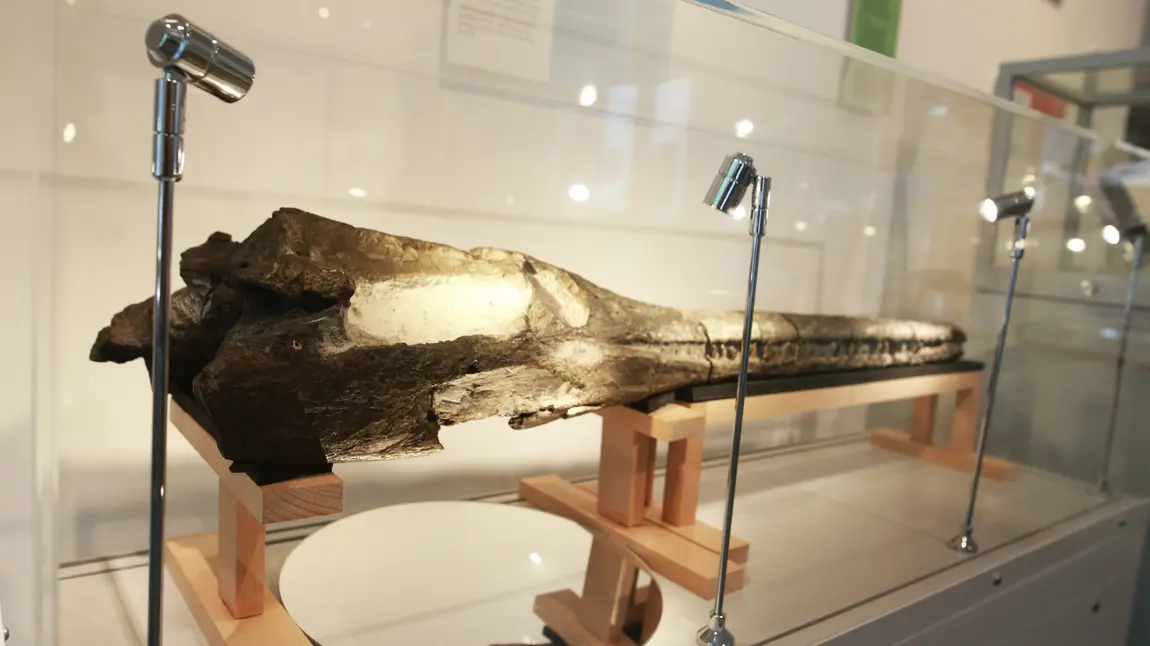Discover fascinating heritage on display for first time

A Turner painting which has not been exhibited for nearly 200 years is just one of many objects that can be seen at attractions across the UK for the first time this summer.
Other items include a 3000-year-old bronze sword, the red shirt worn by explorer David Livingstone when he was found in Africa and a mysterious Jurassic crocodile.

As venues reopen I am pleased that The Heritage Fund has enabled these new discoveries to see the light of day.
- Ros Kerslake, Chief Executive of The Heritage Fund
The display of all of these items has been made possible thanks to National Lottery funding.
What’s on display
Rare Bronze Age sword
A 3000-year-old sword will go on display for the first time in the Fermanagh County Museum in Enniskillen Castle following an acquisition supported by The Heritage Fund. It was discovered in 1952 by the side of Lough Erne near Riverside, Enniskillen, and has been in private ownership ever since.

David Livingstone’s shirt
The red shirt that David Livingstone was wearing when journalist Henry Morton Stanley found him after he had been missing for years in Africa is on display for the first time in the David Livingstone Birthplace Museum, South Lanarkshire.
The Museum reopened on 28 July after a £9.1m regeneration project supported by The Heritage Fund and others.
Turner painting of Malmesbury Abbey
This charming 1827 watercolour was purchased by Athelstan Museum, Malmesbury after receiving a grant of £380,900 from The National Lottery Heritage Fund. It has been in private hands for the last 40 years and hasn’t been publicly exhibited since 1833.
Turner first saw and sketched the Abbey in his youth in the 1790's and he completed the watercolour in 1827.
Famous seaside painting

The original Jolly Fisherman painting, which led to one of the most iconic seaside posters of all time, is now on permanent display at the new Tower Pavilion, Skegness following a National Lottery grant of £4000 to restore it.
The poster and its accompanying slogan ‘Skegness is so bracing’ is possibly the most famous holiday advertisement ever drawn.
Mysterious Jurassic crocodile
This 160-million-year-old fossil was prepared in 2014 using modern laboratory techniques. Some features of the skull are unique and palaeontologists consider it to be a new and yet undescribed species.
The crocodile is on display for the first time in Bath Royal’s summer exhibition and their new digital trails app, made possible thanks to £90,800 support from The Heritage Fund.
Diary of a 19th century weaver and musician
Richard Ryley lived in Barnoldswick in the West Riding of Yorkshire and his diary, rediscovered in 2018, is a rare insight into day-to-day life for the working classes in the 1800s.
It is on show for the first time at Craven Museum and Gallery, Skipton, which recently opened its doors after a two-year closure for a major £2.7m capital redesign project which received funding from The Heritage Fund.
Time capsule at Manchester Jewish Museum
Last year construction began on Manchester Jewish Museum to add a National Lottery funded multi-million-pound extension alongside complete renovation of their historic synagogue. During construction the builders found a glass time capsule deep in a wall cavity near the synagogue’s Ark (the holy cupboard in which the Torah scrolls are stored).
Sealed with wax, the capsule dates back to the synagogue’s foundation in 1873 and is filled with coins, newspapers and synagogue documents. It is yet to be opened and the museum will work with paper conservators to safely open the capsule later this year.
It can be seen in the window of the museum’s brand-new Collection Store.
One of the earliest known examples of an easy chair

Made in England between c.1720-40, the walnut wing chair with original stamped wool upholstery is an exceptional and rare example of early upholstery.
The chair is so delicate it has never been on display before, but it can now be found for the first time at The Museum of the Home, London.
The museum reopened in June 2021 after a three-year refurbishment supported with £12.6m from The Heritage Fund.
Heritage is open
Ros Kerslake, Chief Executive of The Heritage Fund, said: “These are just some of the fascinating heritage objects that people are able to see this summer, thanks to the support of National Lottery players.
“As venues reopen I am pleased that The Heritage Fund has enabled these new discoveries to see the light of day.”
During the coronavirus (COVID-19) pandemic The Heritage Fund invested over £400million of National Lottery and Government funding into the heritage sector, supporting more than 1,500 heritage organisations and enabling hundreds to reopen this summer.
Keep up to date with the latest openings in your area, and share your own heritage object discoveries with us on social media this week using the hashtag #RediscoverSummer.



